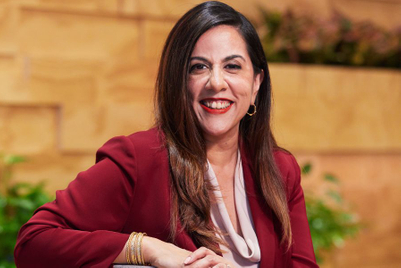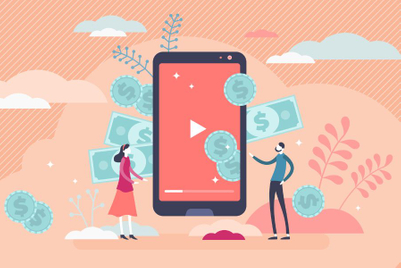
This was the turning point for Guan Hin Tay, APAC regional director of the One Club For Creativity, who decided to become a creator himself. Over the following weeks and months, Tay committed to regularly creating content on LinkedIn, Instagram, and Facebook to truly understand what resonates with an audience.
"When I first started putting myself out there, I felt unsure," says Tay. "But as I kept posting, I began to find my voice. It's not the voice I use for brands. My own voice. And that helped me stand out in a sea of sameness."

Previously the creative chairman of BBDO Singapore, Tay regularly posts to over 16,000 followers on LinkedIn.
"How can we expect clients to trust us with their campaigns if we don’t walk the talk ourselves?," asks Tay. "Creating content isn't just a fun side thing anymore. For those still in advertising, it's becoming a way to survive and to stand out."Tay is far from alone. Increasingly, advertising professionals are becoming creators themselves. In an industry where agencies are consolidating and CMOs lean more on influencer and creator-driven marketing to reduce costs and convert ad spend into revenue, this shift is key to survival.
"With so many layoffs happening, it's become extremely difficult to land your next job," Tay explains. "It's about who knows you, what you believe in, and how you show up online. What you say and do on social media often matters more than what's on your CV."
"In today’s landscape, between two equally qualified candidates, I’d hire the one who also knows how to build and engage an audience. It’s a huge value-add," Hoo says. She also emphasises that attention is the currency, and organic social is where it’s at.
"Learning the game humbled me. I saw how much time we waste debating when we should be testing with the audience," she says. "It’s not about what I think, or what marketers think may or may not work. It’s about what resonates. One post can get 26 million views, and the next, barely five thousand. A comment that took 10 seconds to write can outshine a piece of artwork weeks in the making. It’s humbling and thrilling."
Creating content isn't just a fun side thing anymore. For those still in advertising, it's becoming a way to survive and to stand out. While exact figures are elusive, Tay estimates that around 30-40% of advertising professionals are already dabbling in content creation.
"Some are building personal brands. Others are making niche videos and podcasts or sharing what they know through short reels," he notes. "For some, it's a creative experiment. For others, it's a backup plan."
Whether as a side hustle, a way to better understand audience connection, or a full-time career, many ad professionals see creators building businesses, communities, and influence quickly and cost-effectively, and want to seize this opportunity themselves."I think over the next three to five years, you’re going to see an explosion of ad folks going out on their own or at least creating parallel careers as creators," predicts Denny Handlin, executive creative director at VaynerMedia Australia. "I also think we’ll continue to see the reverse, where more and more agencies will actively strive to attract creator talent to uplift their social offerings."
Creator economy vs traditional agency modelAdvertising agencies are consolidating, triggering record job cuts, while those remaining fear AI replacement. Simultaneously, CMOs increasingly rely on influencer and creator-driven marketing to save costs and maximise returns.
Though traditional agencies aren’t disappearing, a dramatic shift is underway. Creative energy is moving toward the creator space, and many advertising professionals are getting ahead by launching their own creative ventures and content channels."CMOs are under pressure. They want results, not bloated decks and six-month timelines," says Handlin. "Creator-driven marketing gives them speed, authenticity, and performance especially with short-form content dominating right now. At the end of the day, marketers are investing where the attention is now."

Kelson Ong, general manager at We Are Social Singapore, views this as an evolution rather than a decline of agencies.
"At We Are Social, we aren't positioning ourselves in opposition to the creator economy but are integrating it into our core service offerings," Ong explains. "Traditional agencies continue to provide indispensable strategic oversight, brand governance, and integrated campaign management that most individual creators typically cannot deliver independently. The real challenge and opportunity for agencies lies in expanding their value proposition beyond conventional creative development and building expertise in creator strategy, relationship management, and performance optimisation, similar to what we do for our clients.”Ong believes the future belongs to innovative hybrid models that leverage the strengths of both traditional agencies and the creator economy, mitigating their respective limitations.
Hazel Yap, co-founder and COO of Serious Media, estimates that around 30% of traditional agency scope in Singapore is now allocated to creator-driven initiatives."Traditional agencies remain irreplaceable for strategic brand building, integrated campaigns and complex creative development. However, the ROI that influencer marketing provides is undeniably reshaping budgets," says Yap. "Creator partnerships typically deliver 3x better engagement rates while costing 30-50% less than similar agency campaigns. This compelling ROI is particularly attractive to most brand managers."
Beyond cost and authenticity, other advantages include speed-to-market, responding to opportunities in days rather than weeks, and social platforms algorithmically favouring creator content over branded posts.Creator-led marketing delivers speed and authenticity, explaining why CMOs are shifting spend.
"Agencies that evolve into more hybrid models, leveraging both top-down brand thinking and bottom-up creator agility, will be the ones that thrive," says Hoo. "The line between 'agency' and 'creator collective' is already blurring."Attention as the most valuable currency
When engaging audiences, trust is paramount. Creators have a distinct advantage over corporate entities because people tend to trust individuals more than logos."Audiences typically forge connections with creators rather than with corporate entities due to the fundamental human tendency to trust people over institutions," Ong explains. "Creators excel with fan-to-fan communication, engaging horizontally with audiences through shared interests and experiences rather than broadcasting downward as brands traditionally do."

"When you partner with creators, you're borrowing their ready-made community of engaged followers; people who already trust them and actively choose to see their content," Ong adds. "This saves brands from the sometimes expensive, complicated process of building and targeting audiences from scratch through traditional means."
However, not every creator is the right fit. Brands must find creators aligned with their positioning to ensure authentic partnerships.Stop overthinking it
Want to become the next viral creator but unsure where to begin?"Just start and stop overthinking it," advises Handlin. "You already know storytelling, branding, positioning. You’ve been doing it for clients for years, now do it for yourself. If you're worried about what your coworkers think, you're already losing. Let the audience be the judge."
Besides, your agency background could be your secret weapon."In a sea of creators, your understanding of brand strategy and how to measure success gives you a unique edge," Ong says. "The creators who stand out aren't just chasing whatever's trending, they're bringing real expertise and authentic perspectives."
"With CMOs under increasing pressure to make every marketing dollar count, they’re asking why they should invest $100K in a highly polished shoot when a creator can potentially give better engagement for $5K with an iPhone and ring light,” adds Handlin.Being humble enough to try is often the hardest step.
"Every creator starts at zero, and with organic content, we start at zero every day," says Hoo. "I have huge respect for those in the arena, testing and building, over those holding onto unproven ideas or polished case studies."Ong believes success lies in blending the best of both worlds: the strategic rigour of agency thinking with the authenticity and audience connection creators excel at building.
"The people who'll succeed can move comfortably between both worlds," Ong concludes. "Blend that strategic agency thinking with a creator's authentic voice and direct audience connection. This hybrid skill set is becoming increasingly valuable as the lines between traditional advertising and creator content continue to blur."Above all, this is no passing trend. It's a fundamental shift in creativity.
"People now follow people, not organisations or brands. And that opens the door for anyone willing to show up and build something real," Tay says. "So start. Own your voice. Be brave to put yourself out there."And Handlin agrees this is just the beginning.
"We are in the early innings of the greatest shift in attention and media in modern history. Being a creator is like being your own media company, your own talent, your own agency. That’s not going away. It's just starting."


.jpg&h=334&w=500&q=100&v=20250320&c=1)


.png&h=334&w=500&q=100&v=20250320&c=1)



.png&h=334&w=500&q=100&v=20250320&c=1)

.png&h=334&w=500&q=100&v=20250320&c=1)






.png&h=268&w=401&q=100&v=20250320&c=1)
